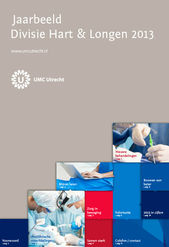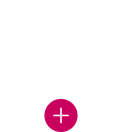
-
Team Interactieve Media 2016

-
Jaarbeeld 2016 afdeling Genetica

-
Speerpunt Cancer Center

-
Jaarbeeld Urologie 2015

-
Jaarbeeld Cardiologie 2015

-
Annual Report Heart & Lungs 2015

-
Jaarbeeld Hart & Longen 2015

-
Duurzaamheidsverslag 2015, UMC Utrecht

-
Strategie facilitair bedrijf

-
Jaarbeeld Cardiologie 2014

-
Patient Centraal

-
Jaarbeeld divisie Vrouw & Baby 13/14

-
Heart & Lungs in business, annual report 2014

-
Hart & Longen in bedrijf, jaarbeeld 2014

-
Resultaten in balans

-
Jaarbeeld Cardiologie 2013

-
Annual report Cardiology 2013

-
Jaarbeeld Cardiologie 2013 A4

-
Jaarbeeld Hart & Longen 2013

-
Annual report Heart & Lungs 2013

-
MVO Magazine














'We are unanimously of the view that the patient comes first. However, this is not always evident from the way our care system is organized, which still revolves too much around healthcare professionals. Doctors are too often in the driver seat, even when this is not strictly necessary.
Patients with heart failure have a chronic illness and require regular visits to the hospital. Specialists will find out how their patients are faring and then may propose a new medication or treatment. Patients then go home and return for follow-up at a later date.
This is too labor-intensive and also old-fashioned. This can be done in a faster, more efficient and more patient-friendly way. This is why we have started an electronic self-management system for patients with heart failure called EMPOWER . Patients are their own boss now and manage their own disorder. Patients take their own measurements at home, including blood pressure and weight, and these are automatically uploaded on the system.
Any abnormal measurements are immediately communicated by messages on their PC or tablet. The cardiologist's or nurse's diaries are also openly available for patients so that they can schedule their own telephone consultations. These consultations are used to tweak the situation, give advice or recommend a visit to the hospital, meaning that regular hospital visits are no longer required as standard. Most personal contact will instead be handled by the GP and home carers in the future. Cardiologists come into play when patients are hospitalized or need procedures.
Heart-failure care at the hospital will therefore be completely reinvented in the future. Patients, nurses, cardiologists, GPs and other healthcare professionals work together as professionals in multidisciplinary teams through both internal and external collaboration. This situation needs a one-stop shop for patients with various possible care scenarios describing what care is best for which patient at what location?
The introduction of an electronic self-management system for patients and the availability of the EPD will enable patients and healthcare professionals to navigate more easily through these care scenarios. This means that boundaries between our hospital, the patient, external healthcare professionals and researchers will disappear and data will become more readily available for research. This is because patients supply us with their data via the electronic self-management platform which we can subsequently use - provided of course that they have consented to this. This makes it easier to identify patients and to contact them for future research. When the patient is in the center, it is important that we continue to share our knowledge optimally and join forces.'

Team Interactieve Media 2016
Jaarbeeld 2016 afdeling Genetica
Speerpunt Cancer Center
Jaarbeeld Urologie 2015
Jaarbeeld Cardiologie 2015
Annual Report Heart & Lungs 2015
Jaarbeeld Hart & Longen 2015
Duurzaamheidsverslag 2015, UMC Utrecht
Strategie facilitair bedrijf
Jaarbeeld Cardiologie 2014
Patient Centraal
Jaarbeeld divisie Vrouw & Baby 13/14
Heart & Lungs in business, annual report 2014
Hart & Longen in bedrijf, jaarbeeld 2014
Resultaten in balans
Jaarbeeld Cardiologie 2013
Annual report Cardiology 2013
Jaarbeeld Cardiologie 2013 A4
Jaarbeeld Hart & Longen 2013
Annual report Heart & Lungs 2013
MVO Magazine
